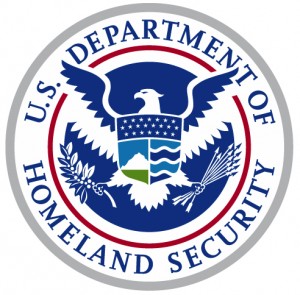DHS Engages Public Safety to Maximize the Benefits of Social Media
 The Department of Homeland Security (DHS) joined the spirited discussion at the Social Media, the Internet and Law Enforcement (SMILE) conference, hosted by the Santa Monica Police Department in January. DHS’s First Responder Group (FRG) is investigating how the emergency management community uses social media to alert and warn the public. They are seeking input from emergency managers, practitioners, public information officers, and experts around the country who are currently using social media as an emergency information dissemination tool.
The Department of Homeland Security (DHS) joined the spirited discussion at the Social Media, the Internet and Law Enforcement (SMILE) conference, hosted by the Santa Monica Police Department in January. DHS’s First Responder Group (FRG) is investigating how the emergency management community uses social media to alert and warn the public. They are seeking input from emergency managers, practitioners, public information officers, and experts around the country who are currently using social media as an emergency information dissemination tool.
At the conference, FRG program manager, Denis Gusty provided an overview of the Alerts and Warnings in Social Media Program, giving audience members a preview of some of the current practitioner best practices in the field. He then segmented the audience into three breakout groups to solicit feedback related to law enforcement’s use of social media for their day-to-day operations, challenges they face, and guidance they seek. Below are some of the themes that resulted from the breakout discussions:
When asked how their agencies are currently using social media, participants’ answers ran the gamut from those not using social media to those who are heavy users. Below are some ways participants are currently using social media and how they decide who gets which messages via which medium:
- Sends out community alerts via email blasts to neighborhood watch block captains
- Alerts and warnings platforms, such as Nixle are increasingly simulcasting via twitter and other social media platforms
- Use Facebook to communicate with neighborhoods and business owners by disseminating press releases, special event information, police department success stories, and changes to personnel that are relevant to the public.
- Public Information Officers tailor messages based on circumstances (how fast or urgent the info is needed) and the method (press release, website, Facebook, Twitter)
- Gain trusted followers in the community, even if they’re not part of law enforcement because community members have lots of followers
Agencies face many obstacles when trying to implement social media programs. Many participants sited they had a lack of buy-in from city or agency administration and a reluctance from superiors to disseminate information to the public. Participants also discussed that they lacked resources and staffing to engage the community and maintenance in keeping current with technology trends. Almost everyone had concerns about liability and a need to institute a social media policy for their agency.
If these obstacles did not exist, participants would have trained and trusted supervisors to disseminate information, to engage in transparent two-way dialogue with the public. This dialogue would alleviate inquiries from the public and other agencies by releasing information to the community. They would also engage in different technologies ranging from Twitter and Nixle to using iPads or mobile devices to check-in via Foursquare or other applications to demonstrate engagement.
Stay tuned for additional details on this program as the FRG will publish guidance documents related to these issues and others on the First Responder Community of Practice in the spring of 2011. The First Responder Communities of Practice is an online network of vetted, active and retired First Responders, emergency response professionals and Federal, State, local, or Tribal Homeland Security officials sponsored by the U. S. Department of Homeland Security (DHS) Science & Technology (S&T) Directorate’s First Responder Technologies (R-Tech) program. Registered members of this professional network share information, ideas, and best practices, enabling them to more efficiently and effectively prepare for all hazards.
For more information contact Denis Gusty at Denis.Gusty@dhs.gov.



